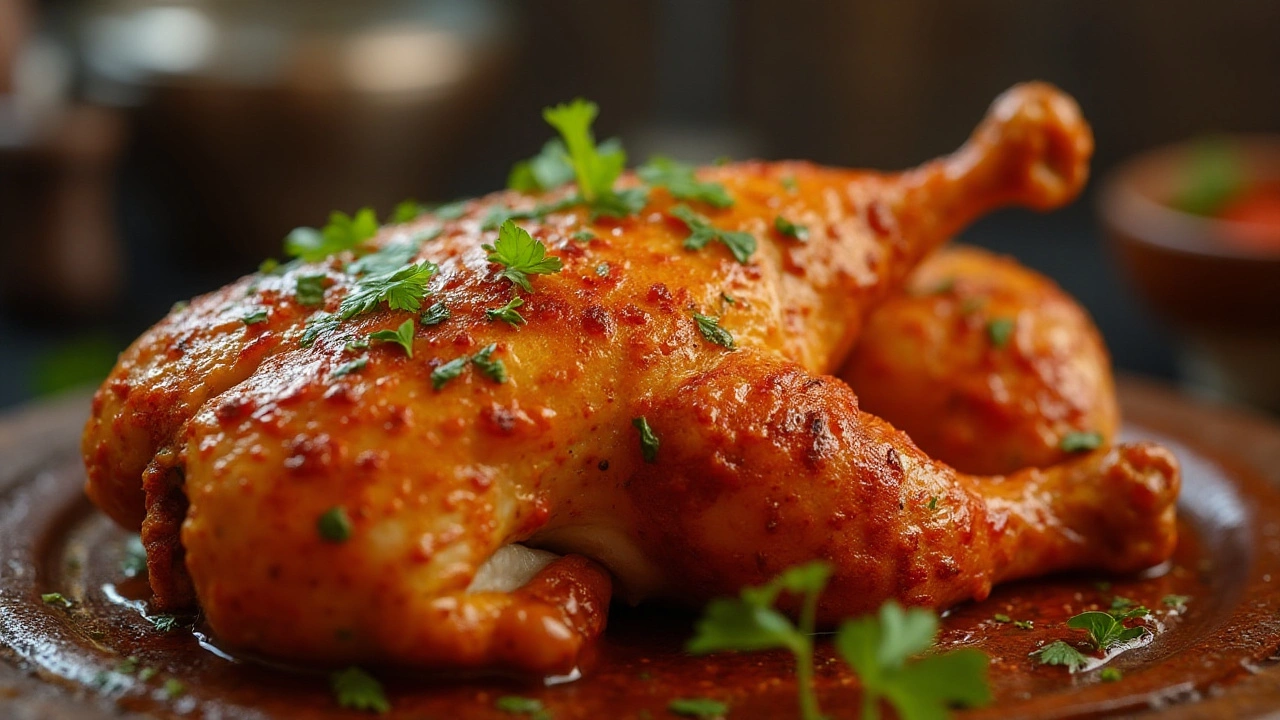Why Is There Red Liquid in Chicken? Easy Answers & Safe Cooking Tips
If you’ve ever cut into a roasted chicken and saw a reddish liquid, you might wonder if the meat is undercooked. The truth is the liquid isn’t blood – it’s mostly water mixed with a protein called myoglobin. Myoglobin gives meat its pink color and releases a little juice when it’s heated.
When chicken cooks, the muscle fibers tighten and squeeze out moisture. Some of that moisture looks red or pink, especially in younger birds or pieces with a lot of bone. It’s completely normal and doesn’t mean the chicken is unsafe.
How to Check If Your Chicken Is Done
The safest way to know your chicken is ready is to use a food‑grade thermometer. Insert the probe into the thickest part of the breast or thigh, avoiding any bone. When the temperature hits 165°F (74°C), the meat is cooked through and safe to eat.
If you don’t have a thermometer, look for clear juices. Press the thickest part with a fork – if the liquid runs clear, the chicken is likely done. A little pinkness in the meat is okay as long as the internal temperature is right.
Tips to Keep Chicken Juicy Without Excess Red Liquid
1. Don’t over‑salt before cooking. Salt draws out moisture, making the liquid more visible. Season when the chicken is almost done.
2. Let the chicken rest. After removing it from heat, cover loosely with foil for 5‑10 minutes. The juices redistribute, and the surface dries a bit, reducing the pink look.
3. Use a moderate heat. High heat can seal the outside quickly but leave the inside cooler, causing more juice to pool. Cook at 350°F (180°C) for most roasts, or medium‑high for grills.
4. Trim excess skin. Skin holds a lot of fat that melts into the meat, adding to the pinkish liquid. Removing some skin can help you see the real color of the meat.
5. Choose the right cut. Breast meat tends to stay whiter, while thighs have more myoglobin and can stay pinkier even when fully cooked.
Remember, the color of the liquid isn’t a reliable safety indicator. Rely on temperature and clear juices instead.
If you ever see a lot of red liquid and the chicken feels cold or gummy, it’s best to give it a few more minutes. A quick check with a thermometer will save you from worries and guarantee safe, tasty chicken every time.
So next time you notice that reddish glow, you’ll know it’s just water and myoglobin playing tricks – not a sign of raw meat. Follow the tips above, and you’ll get perfectly cooked chicken without the mystery juice.
Unveiling the Mystery of the Red Liquid in Tandoori Chicken
Discover the true nature of the red liquid often present in tandoori chicken. Contrary to popular belief, this red liquid is not blood. This article explains what this liquid really is, debunks common myths surrounding it, and sheds light on the science behind the color, catering to both curious cooks and food enthusiasts. Additionally, the article offers practical tips to prepare and cook tandoori chicken without worry.
